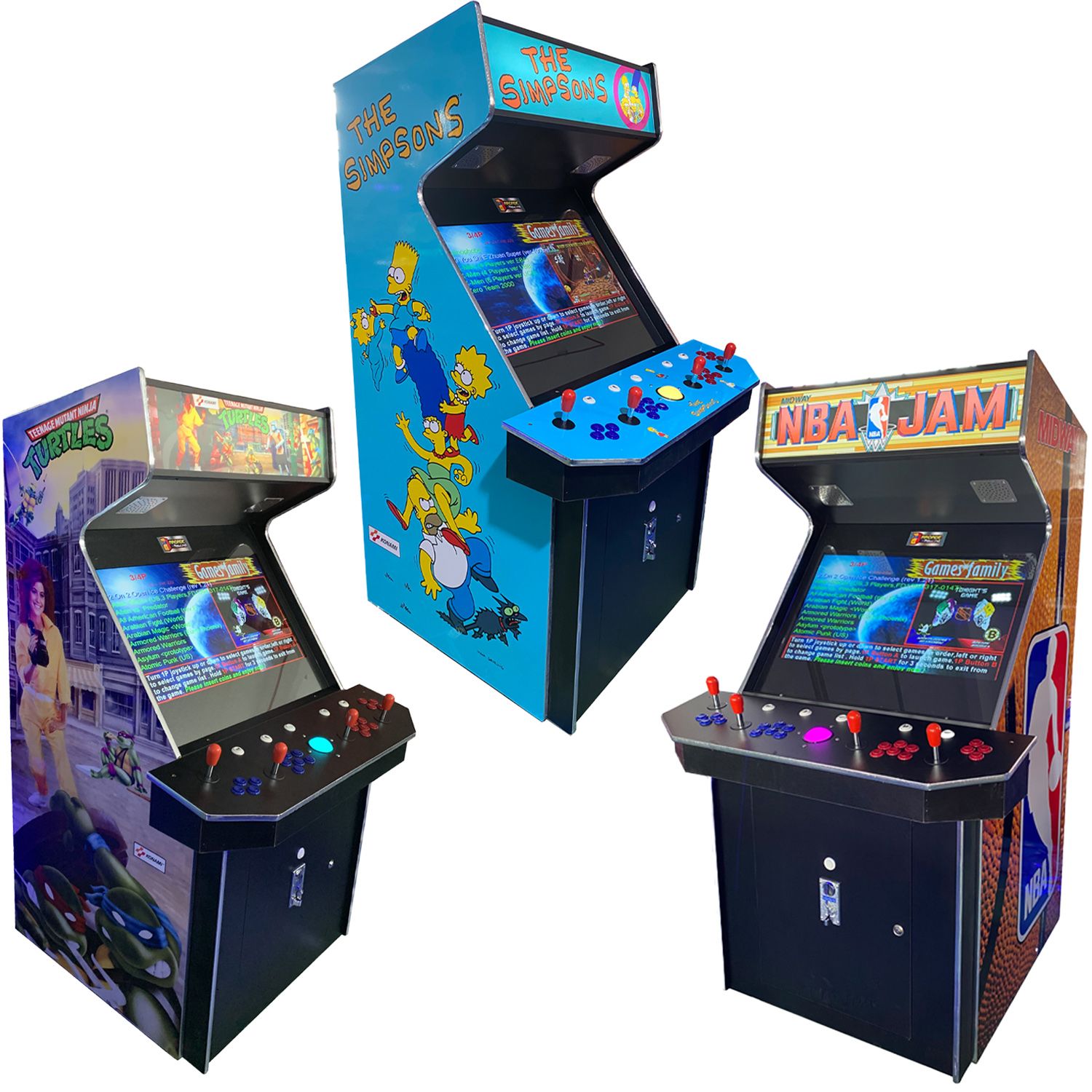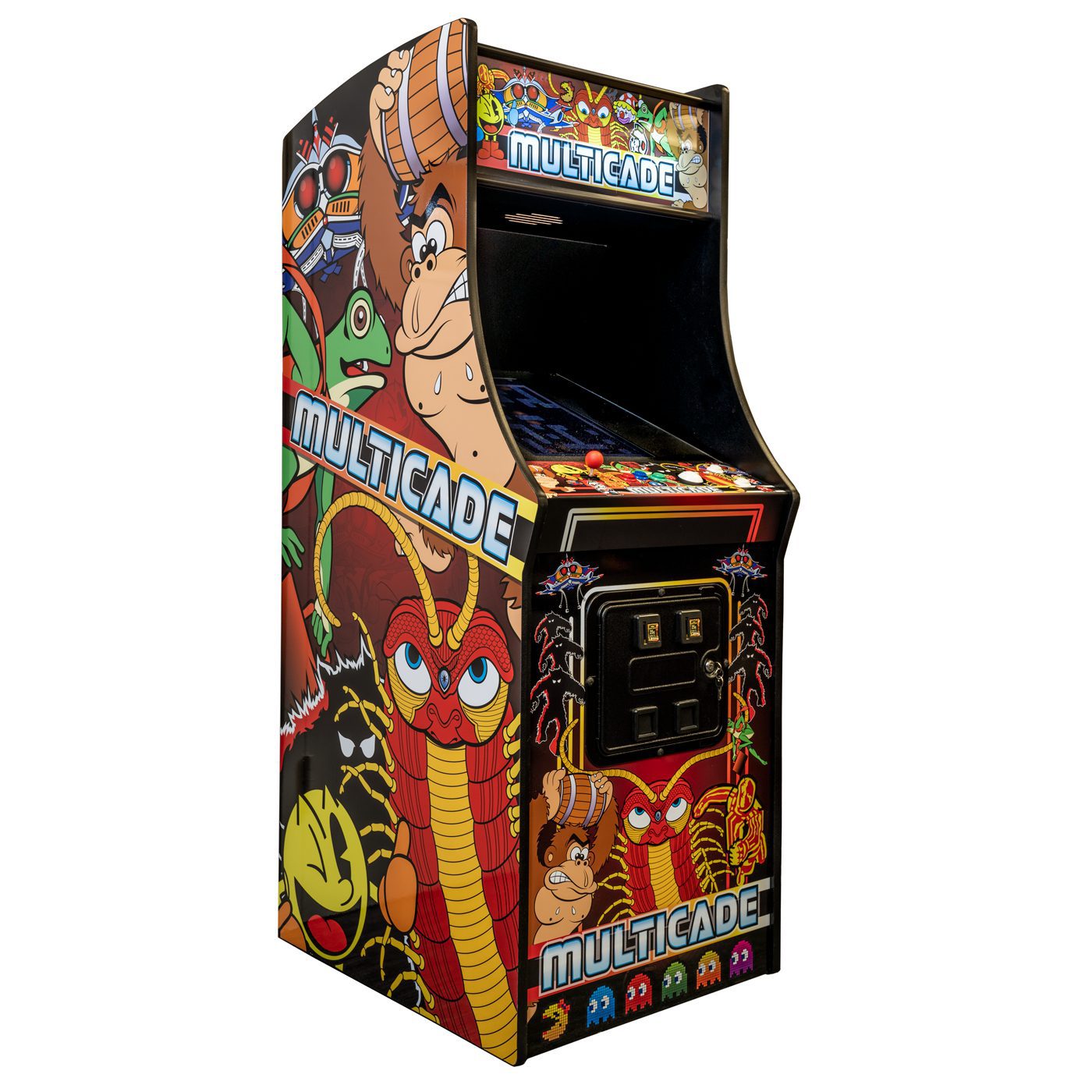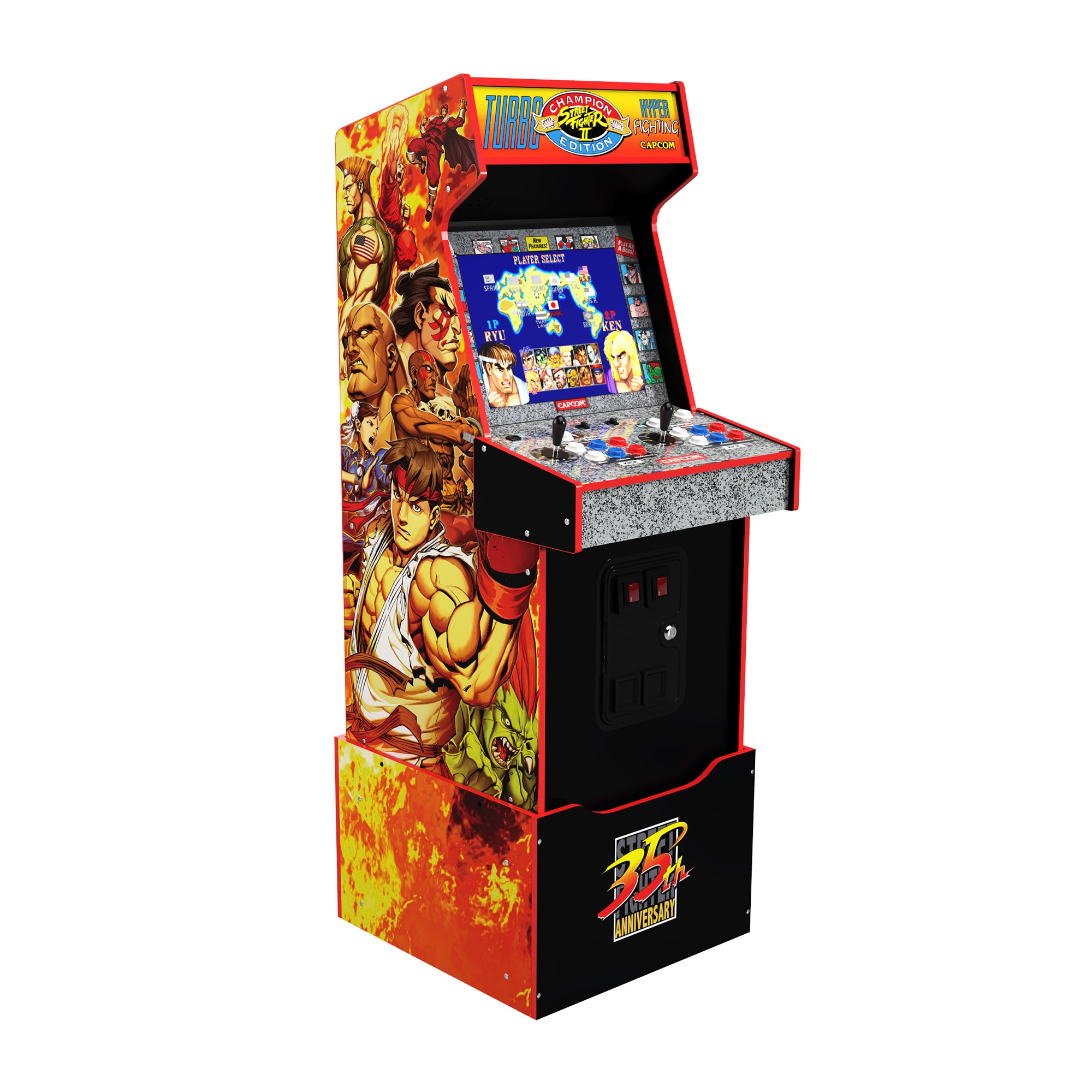Market Research & Design Concepts: Arachnid Arcade Style Cabinet Dart Game

This section details the target audience for an arachnid-themed arcade dart game cabinet, presents three unique design concepts, compares and contrasts them, and provides a marketing brochure for the selected concept. The goal is to create a compelling and profitable product by understanding the market and designing an appealing and functional game cabinet.
Target Audience
The target audience for this arcade dart game is multifaceted. It includes adults aged 25-55, encompassing both casual gamers and experienced dart players seeking a unique and engaging experience. This demographic appreciates novelty, high-quality craftsmanship, and competitive gameplay. Secondary target audiences include family entertainment centers, bars, and arcades seeking to attract a broader customer base with an exciting new game. This approach leverages both the established appeal of darts and the novelty of an arachnid theme to maximize market reach.
Design Concepts
Three unique design concepts are proposed, each incorporating arachnid themes in different ways.
Arachnid arcade style cabinet dart game – Concept 1: The Spider’s Lair
This cabinet is designed to resemble a spider’s lair, utilizing dark, earthy tones and textured materials. Dimensions: 7ft (H) x 4ft (W) x 2ft (D). Materials: Dark stained wood, faux rock panels, metallic accents. The aesthetic is dark and mysterious, with glowing red LED lights simulating spider eyes and web-like patterns etched into the cabinet’s surface. The dartboard is centrally located, surrounded by sculpted rockwork.
Concept 2: The Tarantula Throne
This design centers on a large, imposing tarantula figure integrated into the cabinet’s structure. Dimensions: 6ft (H) x 3ft (W) x 2.5ft (D). Materials: Polished dark metal, acrylic panels, LED lighting. The tarantula is crafted from a combination of polished metal and acrylic, with internal LED lighting to create a dramatic effect. The dartboard is positioned within the tarantula’s body, adding to the overall dramatic aesthetic. The cabinet has a sleek, modern feel.
Concept 3: The Arachnid Web
This concept utilizes a more abstract approach, featuring a large, illuminated web pattern across the cabinet’s surface. Dimensions: 6.5ft (H) x 4.5ft (W) x 2ft (D). Materials: Glossy white lacquered wood, transparent acrylic panels, vibrant LED lighting. The web pattern is created using transparent acrylic panels with embedded LED lighting, creating a visually stunning effect. The dartboard is prominently displayed at the center of the web, The overall aesthetic is bright, modern, and eye-catching.
Design Concept Comparison
The Spider’s Lair offers a high level of immersion but might be perceived as too dark or intimidating by some players. Manufacturing costs are moderate due to the use of readily available materials. The Tarantula Throne is visually striking but potentially more expensive to manufacture due to the complex metalwork and LED integration. It offers a high level of visual appeal and unique gameplay experience. The Arachnid Web boasts a bright and inviting aesthetic, making it suitable for a wider audience. Manufacturing costs are relatively low, though the intricate LED lighting system requires careful planning and assembly.
Marketing Brochure: The Tarantula Throne
| Product Features | Pricing & Availability |
|---|---|
| Stunning tarantula design with integrated LED lighting | $12,000 (USD) |
| High-quality materials: Polished dark metal and acrylic | Available for pre-order; estimated delivery 6-8 weeks |
| Ergonomic design for comfortable gameplay | Custom designs available upon request (additional cost) |
| Durable construction for long-lasting performance | Warranty: 1 year parts and labor |
| Unique and eye-catching design to attract customers | Contact us for bulk order discounts |
Gameplay Mechanics & Features

Arachnid Arcade’s dart game blends classic dart gameplay with a thrilling arachnid theme, offering a unique and engaging experience for players of all skill levels. The game features a custom-designed dartboard, innovative scoring mechanics, and adjustable difficulty levels to provide a consistently challenging and rewarding experience.
Dartboard Design and Scoring System
The dartboard is circular, approximately 18 inches in diameter, and divided into concentric rings and spiderweb-shaped segments. The central bullseye represents a giant spider’s eye, awarding the highest points (50 points). Surrounding this are rings representing the spider’s body, each ring decreasing in point value (40, 30, 20, 10). The outer ring is segmented into eight spider leg sections, each worth 5 points. Landing a dart in a spider leg section that matches the current game’s randomly selected “target leg” will double the point value for that throw (10 points). The spiderweb segments between the legs contain point multipliers (x2, x3, x0 – a missed throw). This adds an element of strategy and chance, as players must aim not only for specific point values but also for advantageous multipliers.
Innovative Gameplay Mechanics
Beyond the standard dart-throwing action, Arachnid Arcade introduces “Spider Web” and “Venomous Strike” mechanics. The “Spider Web” mechanic activates when a player hits three consecutive spider leg segments. This temporarily increases the point value of all spider leg sections, creating a window of opportunity for high scoring. The “Venomous Strike” mechanic is triggered when a player hits the spider’s eye (bullseye) three times consecutively, instantly awarding a bonus of 100 points and a short period of increased point multipliers on all segments. These features add a dynamic layer to the game, rewarding skillful and strategic play.
Difficulty Levels
Three difficulty levels are available: Beginner, Intermediate, and Expert.
Beginner: This level offers a simplified scoring system with only the main rings and the spider’s eye active. The “Spider Web” and “Venomous Strike” mechanics are deactivated. The reward for completing this level is a simple digital trophy and a place on the Beginner’s leaderboard.
Intermediate: This level activates all scoring zones (rings, legs, and spiderweb multipliers) and introduces the “Spider Web” mechanic. The “Venomous Strike” mechanic is still deactivated. The reward for completing this level is a more elaborate digital trophy and a place on the Intermediate leaderboard, along with a bonus of 500 points to use in a subsequent game.
Expert: This level activates all features including both “Spider Web” and “Venomous Strike” mechanics, and introduces a time limit to each round. The scoring system is fully operational with increased point values on some segments. The reward for completing this level is an advanced digital trophy, a place on the Expert leaderboard, and an opportunity to unlock bonus content.
Gameplay Rules
The following rules govern gameplay in Arachnid Arcade:
- Setup: One or two players select their difficulty level. Darts are provided. The game randomly selects a “target leg” for the round.
- Gameplay: Each player takes turns throwing three darts. The player scores points based on where their darts land on the board. The “Spider Web” and “Venomous Strike” mechanics are activated according to the selected difficulty level.
- Scoring: Points are tallied after each round. The player with the highest score at the end of a predetermined number of rounds wins. Bonus points are awarded for completing levels and activating special mechanics.
Manufacturing & Marketing Strategy

This section details the manufacturing and marketing strategies for the Arachnid Arcade-style dart game. A robust manufacturing process, utilizing high-quality materials, is crucial for ensuring product durability and longevity. Simultaneously, a well-defined marketing plan targeting the appropriate audience will be essential for successful product launch and market penetration.
Cabinet and Dartboard Materials and Sources
The arcade cabinet will primarily utilize medium-density fiberboard (MDF) for its structural integrity and affordability. MDF offers excellent stability and is readily machinable, making it ideal for complex cabinet designs. The sourcing of MDF will be from reputable suppliers with established certifications for sustainable forestry practices. For the cabinet’s exterior, a durable laminate will be used, providing scratch resistance and a visually appealing finish. The laminate will be sourced from a supplier specializing in high-pressure laminates, known for their colorfastness and resistance to wear and tear. The dartboard will utilize a sisal fiber dartboard, chosen for its durability and consistent bounce. Sisal fiber is a natural material known for its resilience and ability to withstand repeated impacts. Sourcing will be from a supplier specializing in high-quality dartboards for commercial use. High-quality, durable metal components will be sourced from reputable metal suppliers, ensuring consistent quality and precision.
Manufacturing Process, Arachnid arcade style cabinet dart game
The manufacturing process begins with the cutting and shaping of MDF panels using Computer Numerical Control (CNC) machinery for precision and repeatability. These panels will then be assembled using industrial-grade adhesives and fasteners. The laminate will be applied to the cabinet exterior using specialized equipment, ensuring a smooth and even finish. The electronic components, including the game’s control system and display, will be integrated into the cabinet during assembly. The dartboard will be mounted securely onto a robust backing plate, and then integrated into the cabinet’s design. Quality control checks will be implemented at each stage of the process to ensure that the final product meets the required standards.
Estimated Manufacturing Costs
The estimated manufacturing cost per unit is broken down as follows: Materials (MDF, laminate, sisal dartboard, electronics, fasteners, etc.): $200; Labor (cutting, assembly, finishing, testing): $150; Overhead (factory rent, utilities, equipment maintenance): $50. This results in a total estimated manufacturing cost of $400 per unit. This estimate is based on industry averages and assumes a production run of 500 units. Adjustments may be necessary depending on economies of scale and specific supplier pricing. For example, a larger production run could reduce the per-unit cost of materials due to bulk purchasing discounts.
Marketing Plan
The target audience for this game is broad, encompassing various demographics with differing preferences and budgets. The following table Artikels the marketing plan.
| Target Audience Segment | Marketing Channel | Promotional Strategy | Budget Allocation |
|---|---|---|---|
| Families with children (ages 8-14) | Social media (Facebook, Instagram), family-oriented websites and blogs | Targeted advertising campaigns, engaging video content showcasing family gameplay | $10,000 |
| Young adults (ages 18-25) | Social media (TikTok, YouTube), gaming websites and forums | Influencer marketing, online contests and giveaways, interactive ads | $15,000 |
| Adult arcade enthusiasts (ages 25-55) | Arcade and entertainment publications, online forums dedicated to arcade games | Print and online advertisements, partnerships with arcade owners | $5,000 |
| Bars and entertainment venues | Direct sales, trade shows, industry publications | Promotional materials, competitive pricing, demonstrations at trade shows | $5,000 |
